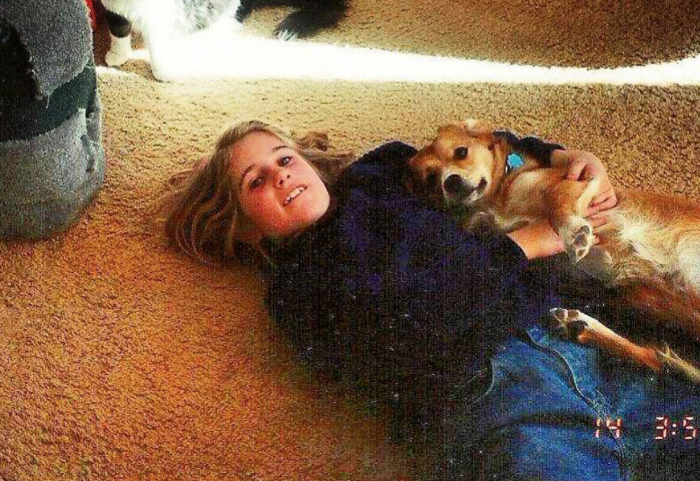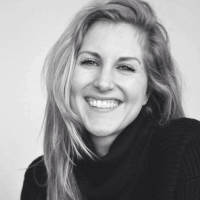I never considered myself a trauma survivor.
I didn’t think I had something as severe as post-traumatic stress disorder (PTSD)—I saved that diagnosis for those who suffered from things far worse than me. It felt dramatic and attention-seeking to label myself as a “trauma survivor.”
First, what is trauma? The term tends to be loosely thrown around, and the meaning can be hard to identify.
Essentially, trauma is an event that overwhelms the central nervous system and exceeds our ability to cope or integrate the emotions involved with that experience. The more frightened and helpless we feel, the more likely we are to be traumatised.
PTSD is a mental health condition that develops after a person has been through a traumatic event or has experienced repeated exposure to trauma. It’s natural to feel afraid during and after a traumatic situation. Our inner fight-or-flight response is our body’s way of protecting us from harm.
While everyone will virtually experience a range of reactions after a traumatic event, it’s those who are unable to integrate the experience properly, and when it starts to interfere with daily life, that it develops into PTSD. Symptoms like flashbacks, bad dreams, or frightening thoughts that last for more than a month and interfere with relationships or work are considered to be PTSD.
First, I need to admit that I feel a bit strange writing publicly about this. You see, I used to write a lot. In fact, writing openly about my trauma and grief got me through them.
I recently graduated as an art therapist, and I wasn’t sure if it was professional to continue writing in the same way I once did—especially about something as intense and vulnerable as my journey through PTSD.
As a student, it was perfectly fine to write about the pain of my past. I was still learning, developing, and healing. We were encouraged to see a counselor and speak openly about our inner demons. But as a graduate today, it feels like it’s something I should have resolved by now.
Yet, self-expression and writing saved my life in many ways. How could I stop now just because I graduated? I believe that speaking openly about my journey could help others—either those who (like me) deny their trauma because it doesn’t feel substantial enough, or those who feel like like they need to be “professional” and hide behind some label in order to appear like they have it all together.
While I might be a new therapist, I imagine I’m not the only one who chose this profession from a previous experience. I don’t wish to pretend that I healed up perfectly and that I have a 30-day program that will solve everyone else’s problems.
I wish I could though, but I’m still on the road to healing. I can only start where I am and with all the baggage I have. In my studies, we used to refer to this as a “wounded healer.” I like that concept—it paints a picture of an empathetic, unpretentious person who sees you for all that you are.
Those who know me are aware that my sister died of suicide. While I rarely ever speak of the subject, I have written about my grief and pain extensively. It’s been seven years since she died, and I still feel the trauma from the years following her death.
Anyone who has lost someone they love to suicide can understand the guilt, the shame, and the isolation that pile on top of the unbearable grief of their loss. We are often plagued with guilt, “Was there anything more I could have done?”
Suicide is still misunderstood and stigmatised. I still fear the reaction of others and their misguided, unintentionally hurtful words.
For years, I was oblivious to the accumulation of trauma in my body until I moved to the other side of the world, and I met the man I am with today, which made me feel safe and secure in my home environment. Without the presence of any actual threats, my mind was bewildered by the stability of my life—it almost craved danger. For over 10 years, I coped with life-and-death situations, and now there was none—it was calm and easy.
It wasn’t long before I was pulled in another type of storm—one that most people can relate to: a toxic workplace. What made matters worse was that I could not quit or go on stress leave unless I was prepared to leave the country.
Essentially, my visa to remain in Australia was tied to that job. I saw a lawyer who told me that if I wanted to stay in the country, then I would have to stick it out for the next two and a half years; only then would I be able to quit.
It felt like I’d been sentenced to prison. The feeling of being trapped and helpless triggered memories of my past when I was fighting to save my sister’s life. After having a panic attack at work and being prescribed three different types of medications, I became seriously concerned about my health.
It scared me because I did everything I was supposed to do. I ate well, exercised, saw a psychotherapist, and meditated almost daily. I functioned relatively well on the outside, yet I had a terrible stomachache, regular nightmares, and severe chest pain. What more could I possibly do?
Eventually, those painful two and a half years had passed, and I could finally quit. When I walked out of that office for the last time, I almost kissed the ground in euphoria. I felt so free and alive. Magically, all of my physical symptoms subsided. I could finally breathe and cherish every single unstrained breath.
Sadly, it didn’t last. All the familiar physical symptoms of anxiety slowly came back. It was clear to me that all this unprocessed pain was still in my body. I knew I needed to heal myself by gaining more understanding of my unconscious triggers. Of course, I had no idea how to go about that because, well, they are not conscious. This led me to where I am now—undergoing something called Eye Movement Desensitisation and Reprocessing (EMDR).
The goal of EMDR is to process and integrate traumatic memories into standard, less emotionally-charged memories. I expected the first session to “cure” me, and I’d leave a new person, just in time for graduating as an art therapist.
But life rarely follows the expectations we have for it. My psychologist also explained that EMDR tends to work best for a onetime traumatic event, such as a car accident. For those like me who have complex PTSD, a few more sessions are usually required.
In addition to monthly EMDR sessions, my psychologist recommended that I read The Body Keeps The Score and try out trauma-sensitive yoga. I’m also taking a meditation practitioner course where I meditate daily, and I’m learning from wise teachers like Tara Brach, Eckhart Tolle, and Deepak Chopra.
While the process has been slow and seemingly insignificant, I can feel a bit more space in my heart. The pace of it still infuriates me at times, if I’m being honest. But I know that hurrying and rushing doesn’t help the healing process—in fact, it seems to have the opposite effect.
So now I’m doing what I’ve never done: slowing down and creating time for deliberate quietness through meditation and connecting to my body to learn its language through yoga.
I have moments now when I feel overwhelmed by my to-do list and feel my whole body tense. I can usually pinpoint when I have dropped outside of my window of tolerance because I suddenly have the urge to act immediately on every single thing—I feel like I don’t have a moment to waste.
In those moments, I stop. I relax my shoulders and take a deep breath. If I’m swarmed with fear-inducing thoughts about all the worst-case scenarios, I reflect on the opposite of those thoughts. This pause might last for less than a second, and then the rush of thinking swarms me again. When it does, I try my best to be compassionate and forgiving toward myself for falling back into my old ways.
We are who we are because of years of repetition that have resulted in habits—but we can create new ones. I’m changing, every single day. These moments of stillness and peace throughout the day add up—they are the building blocks for a new way of being. They are the daisies and sunflowers on the road to healing.
There are no shortcuts or accelerator programs to heal ourselves—at least none that I’m aware of. It takes time to break through the fog of the past and settle into the stillness of being—to unravel ourselves from the pain we once endured and return to the life that’s in front of us now. It takes continuous, daily effort, and it requires inordinate amounts of self-forgiveness and compassion to do that.
I don’t know if I’ll ever be completely healed, and maybe that’s not the point. Maybe the point is to expand my tolerance of all that it is to be human.
Maybe the path of being a healer of any kind is not necessarily showing people the way, but being able to sit with them in whatever they are experiencing. We all experience things so differently, anyway. There is no one-size-fits-all.
So, in the meantime, I’ll continue doing what I’m doing, or continue what I’m being.
I’m taking each day as it comes—one breath at a time.
~









Read 2 comments and reply